

Civilian Conservation Corps
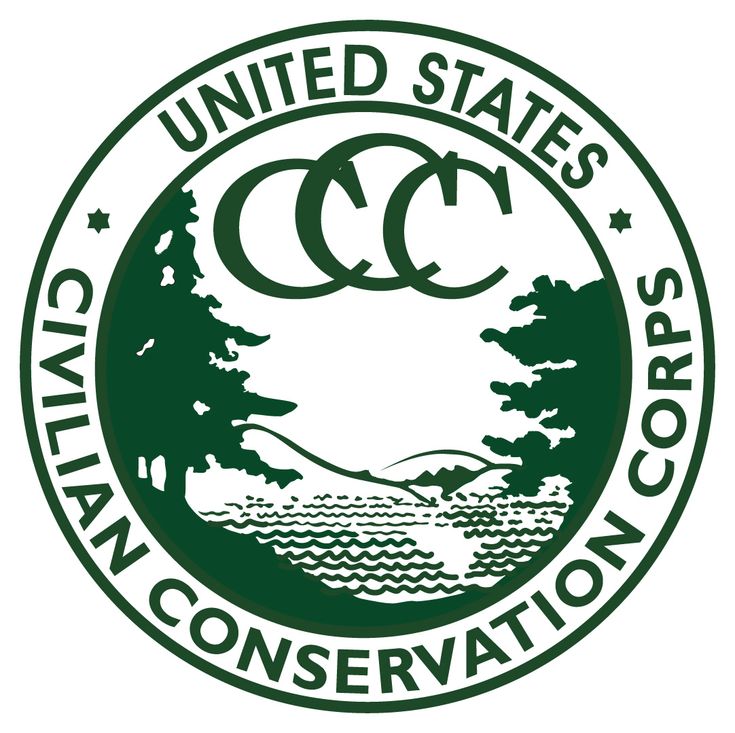
Many of our ATWA goals and practical ideas have been inspired by the CCC of the 1930's and '40s.
"Idle through no fault of your own, you were enrolled from city and rural homes and offered an opportunity to engage in healthful, outdoor work on forest, park and soil conservation projects of definite practical value to all the people of the nation. The promptness with which you seized the opportunity to engage in honest work, the willingness with which you have performed your daily tasks and the fine spirit you have shown in winning the respect of the communities in which your camps have been located, merits the admiration of the entire country. You, and the men who have guided and supervised your efforts, have cause to be proud of the record the CCC has made in the development of sturdy manhood and in the initiation and prosecution of a conservation program of unprecedented proportions."
— President Franklin D. Roosevelt, radio message to CCC enrollees, April 17, 1936
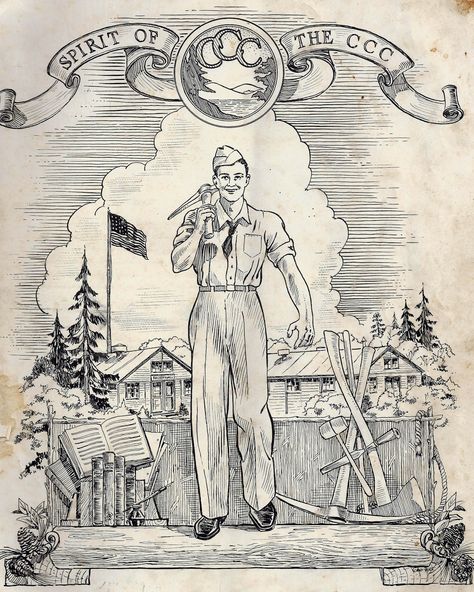
2024 is the 91st anniversary of the New Deal and so March 31 is the 91st anniversary of one of the first-funded, and longest-lasting New Deal relief programs, the Civilian Conservation Corps. Franklin Delano Roosevelt was sworn in as president on March 4, 1933, and in his inaugural address reassured Americans with the famous line: “The only thing we have to fear is fear itself – nameless, unreasoning, unjustified terror which paralyzes needed efforts to convert retreat into advance.” The next 100 days were filled with legislation to help the devastated economy — which had a 25% unemployment rate — and to put Americans to work to feed, clothe, and house their families. The CCC was FDR’s idea – reflecting his longstanding interest in well managed forests and conservation, and he tasked Secretary of Labor Frances Perkins, the first woman to serve in the cabinet, to work with Congress to pass the necessary legislation and then set up the program. On March 31, 1933, FDR signed the enabling legislation and a week later issued an executive order creating the agency and appointing a director.
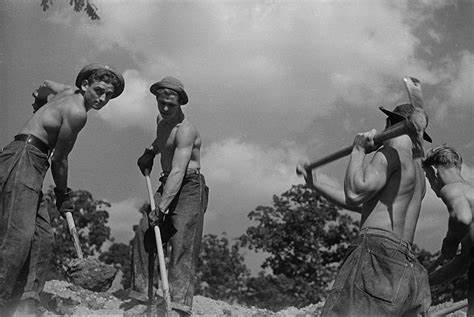 Four federal departments cooperated to run the CCC: Labor, Agriculture, Interior, and War (the military ran over 4,000 camps, often located in national forests, in units of 200 men), and there was close collaboration as well with the National Park Service and the U.S. Forest Service. By July 1933 there was an initial enrollment of 250,000 men. Technically, the program provided relief funds, rather than a salary, for political reasons, and $25 of the monthly $30 stipends (approximately $689 in 2023) were automatically sent home to recruits’ families to support them.
Four federal departments cooperated to run the CCC: Labor, Agriculture, Interior, and War (the military ran over 4,000 camps, often located in national forests, in units of 200 men), and there was close collaboration as well with the National Park Service and the U.S. Forest Service. By July 1933 there was an initial enrollment of 250,000 men. Technically, the program provided relief funds, rather than a salary, for political reasons, and $25 of the monthly $30 stipends (approximately $689 in 2023) were automatically sent home to recruits’ families to support them.
The CCC employed an estimated three million young men ages 18 to 25 to plant two billion trees, restore the damaged lands in the Dust Bowl, fight fires, control erosion, assist with disaster relief, build 800 new state parks, and build or improve facilities at dozens of national parks, as well as at historic battlefields and military sites. Malnourished young men were transformed by three hearty meals a day, exercise programs, medical care, and labor, and used their spare time to take classes, write newsletters, attend religious services, and engage in sports and other recreational activities.
The legislation authorizing the CCC was unusual in having a clause inserted by the only Black member of Congress, Oscar DePriest of Illinois, stating: “That in employing citizens for the purpose of this Act, no discrimination shall be made on account of race, color, and creed.” But while 200,000 African Americans did enroll, their placement was often determined by prevailing race relations during an era when segregation was permissible under the ‘separate but equal’ doctrine. Local politics and officials’ prejudices determined whether there would be all-Black CCC units in some regions, or integrated units were acceptable. To rectify such prejudicial treatment in this and other New Deal programs, required more assertive action in the following decades by federal officials, a Civil Rights movement, and new laws and Supreme Court decisions. In contrast, some 88,000 Native Americans worked within a separate division of the CCC with many living at home and working on their reservations and in nearby areas.
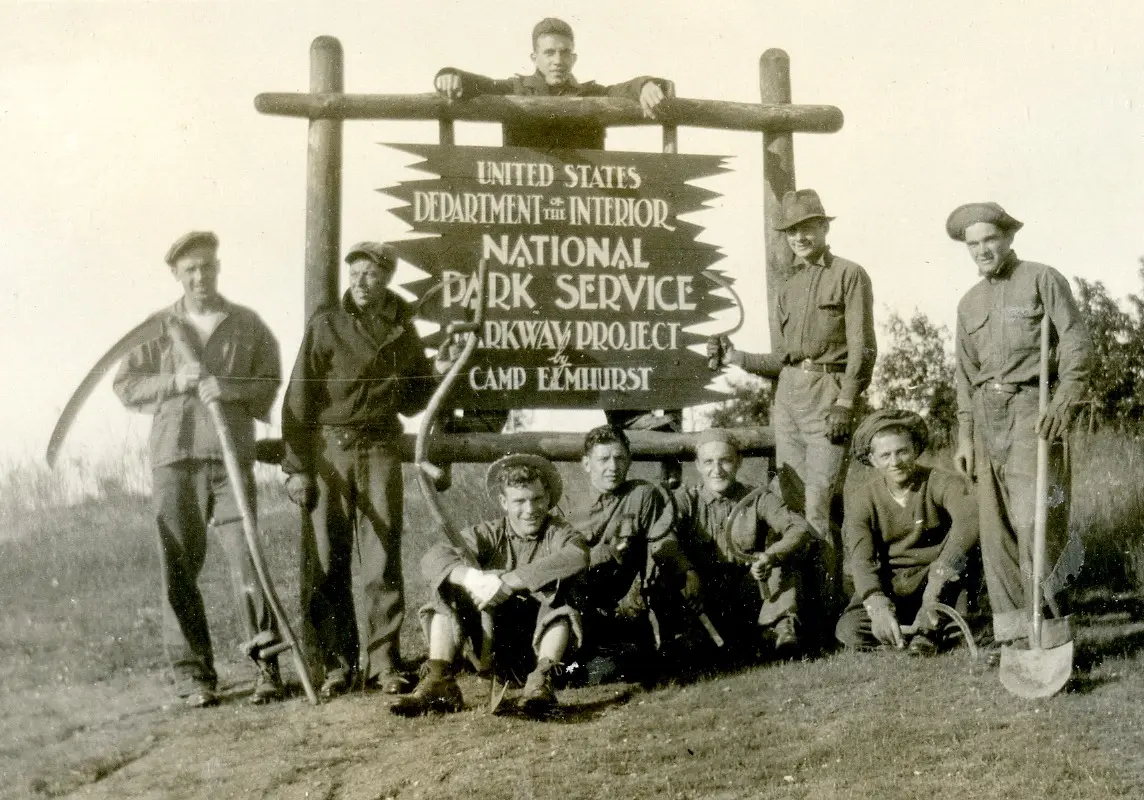 There were no women in the CCC except those employed locally as secretaries or medical assistants or in similar positions. First Lady Eleanor Roosevelt, supported by Secretary of Labor Frances Perkins, suggested an alternative program for women which was funded separately from the CCC. Offered from 1933-1937, it sent about 8,500 unemployed women to four-week summer sessions, nicknamed the “She-She-She” camps (some were urban based), to take courses, work on projects, get vocational counseling, engage in recreational activities, and eat better meals, like the CCC men, than they had been able to afford. They also received a small stipend. The CCC program endured longer than other New Deal employment programs, closing at the end of June 1942 as war needs took priority.
There were no women in the CCC except those employed locally as secretaries or medical assistants or in similar positions. First Lady Eleanor Roosevelt, supported by Secretary of Labor Frances Perkins, suggested an alternative program for women which was funded separately from the CCC. Offered from 1933-1937, it sent about 8,500 unemployed women to four-week summer sessions, nicknamed the “She-She-She” camps (some were urban based), to take courses, work on projects, get vocational counseling, engage in recreational activities, and eat better meals, like the CCC men, than they had been able to afford. They also received a small stipend. The CCC program endured longer than other New Deal employment programs, closing at the end of June 1942 as war needs took priority.
CCC projects live on as does its influence, laying a foundation for the modern environmental movement. Every year millions of Americans encounter the legacy of the CCC. Its workers undertook projects in every state, as well as in Alaska, Hawaii, Puerto Rico, and the Virgin Islands. In the West, they ranged from the Bonneville Dam and Timberline Lodge on Mt. Hood, to the majestic Yosemite, Yellowstone, Glacier, and Grand Canyon national parks, and monuments like Mesa Verde and Mt Rushmore, while in the East there were projects at Acadia National Park, the Shenandoah National Park, and the Blue Ridge Parkway, and Gettysburg Battlefield. At national and state parks visitors have passed through headquarters buildings, driven the roads, hiked some of the 13,000 miles of trails built by the CCC, stayed in lodging or campgrounds, fished in lakes and rivers restocked by the CCC, forded bridges, and visited rest rooms and other facilities that were built by CCC labor. A list of over 200 CCC Camps and many parks can be found online, with a more comprehensive list of camps by state here.
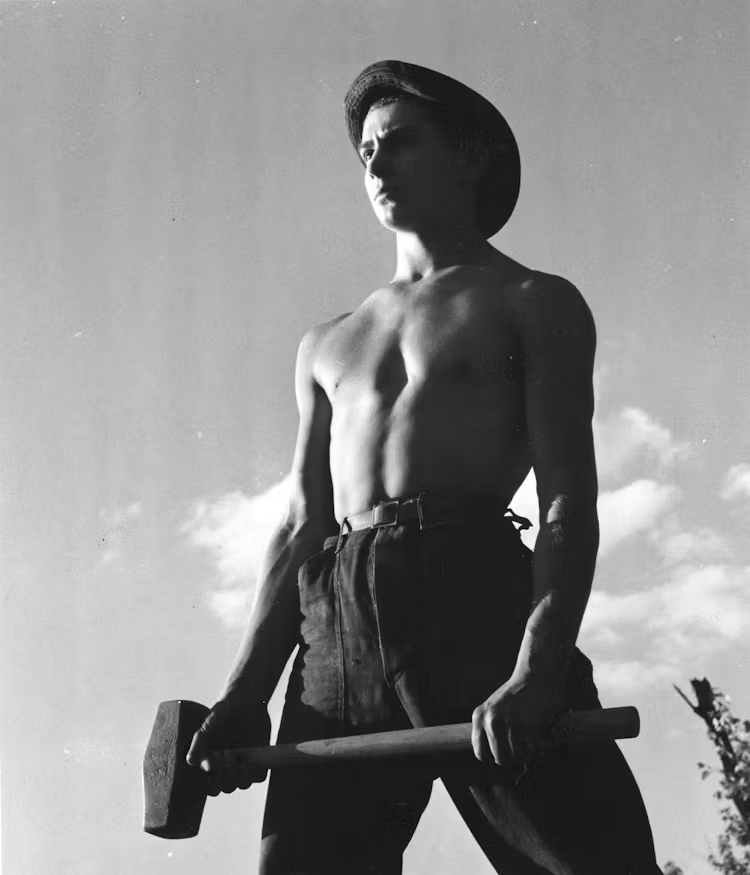 What FDR had predicted on the third anniversary of the CCC in April 1936 had come true: Our records show that the results achieved in the protection and improvement of our timbered domain, in the arrest of soil wastage, in the development of needed recreational areas, in wildlife conservation, and in flood control have been as impressive as the results achieved in the rehabilitation of youth. Through your spirit and industry, it has been demonstrated that young men can be put to work in our forests, parks, and fields on projects which benefit both the Nation’s youth and conservation generally.
What FDR had predicted on the third anniversary of the CCC in April 1936 had come true: Our records show that the results achieved in the protection and improvement of our timbered domain, in the arrest of soil wastage, in the development of needed recreational areas, in wildlife conservation, and in flood control have been as impressive as the results achieved in the rehabilitation of youth. Through your spirit and industry, it has been demonstrated that young men can be put to work in our forests, parks, and fields on projects which benefit both the Nation’s youth and conservation generally.
Copyright ATWA 2013 ATWA is a California 501(c)(3) Non-Profit Organization